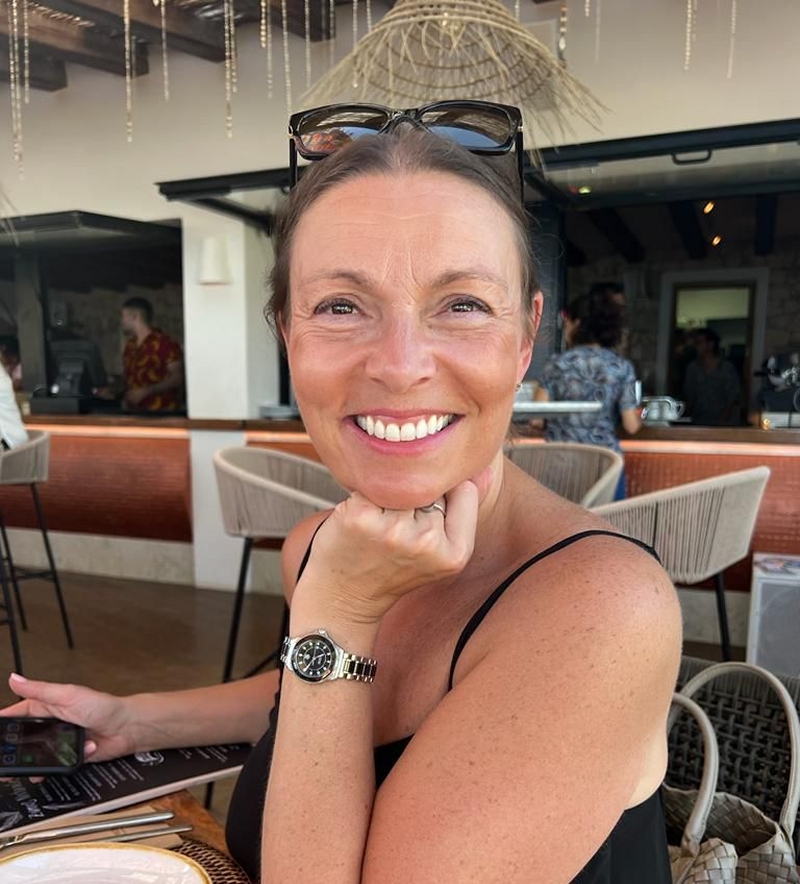The connection between bone health and overall well being
- byAdmin
- 27 August, 2024
- 20 Mins

From a very young age, we're taught to drink milk every day to grow up big and strong, making our bones as sturdy as steel. But if memory serves us right, drinking it may not have been the easiest for everyone since some of us have developed a "sensitive" taste even before we understood what taste actually meant! As we grew older, we may have taken a tumble or two, resulting in a fracture that hurt like hell. Despite the pain, you've probably wondered - "Did my bone break because I don't drink enough milk?"
Now that we're grown let's step out of the kiddie pool and start talking like adults. We all know that kids are very resilient, and even the biggest fall may not result in broken bones. However, if we take a look at elders, even a slight bump can cause a fracture. On top of that, if we don't take care of our bone health, we may be at risk of developing osteoporosis. What you may not know is that bones contribute a lot to our overall health!
The connection between overall well-being and bone health is easy - all you need to do is look at how well you treat yourself. Part of it includes ensuring our bones are sturdy and dense, but that's not as simple as it sounds. That is why today we are talking about osteoporosis. This disease is known to silently diminish the health of your bones, making you weaker and more prone to fractures. It is (maybe) an inevitable aspect of our lives as all of us get older, but it is not necessarily something you have to deal with.
The connection between overall well-being and bone health is easy - all you need to do is look at how well you treat yourself.
Let's see how you can get better and improve your overall health by caring for your bones!
What is osteoporosis?
Osteoporosis is a disease that weakens your bones, making them less dense and much thinner than they should be. Ultimately, as you grow, your bones are very, very dense and quite strong (so they can support your weight) and absorb most forms of impacts done on the body. Now, we just mentioned (a few lines earlier) that the density of the bones is naturally lost with the aging process, as well as the ability to regrow is lost, too.
But, for people dealing with osteoporosis, it is so much more than this simple definition. If you have this condition, your bones are much weaker than they should be and thinner, too, making your body fragile. Most people are blissfully unaware that they have this condition until it is too late - or once they break a bone.
Getting educated on the subject means learning your facts at the very beginning. People who are dealing with osteoporosis usually have a list of the most commonly affected bones. These are the wrists, the hips, and the spine. It is so common that almost half of females have it, and every 1 in 4 males has it too. Nevertheless, this should not indicate that you should not protect yourself against it.
Osteoporosis Symptoms
To protect yourself from something, first, you need to know what you are protecting yourself from. However, osteoporosis does not have the same development as many other conditions. In other words, you won't experience any particular set of osteoporosis symptoms before you get diagnosed with it. That is why most health experts are calling it a silent disease. You won't feel or notice something wrong - the only symptom you will experience is suddenly breaking a bone, which we all know is not the best feeling.
Despite this, you need to be very careful and thorough when you do your checkups (by yourself and with your health provider). Keep in mind that even if there aren't concrete osteoporosis symptoms set in place, there are still signs you need to pay mind to. Here are some of the most important ones:
- You will suddenly start to lose weight.
- You will start noticing changes in your posture (either bending forward or stooping).
- Experiencing lower back pain is a key factor, too.
- You will notice shortness of breath, like lowered lung capacity.
By yourself, sometimes it may be difficult to spot these changes (especially with your posture and your height). That is why health professionals are there - for your support and your overall health. Once you start looking into the symptoms, you will ask yourself the question - what are the osteoporosis causes?
Osteoporosis Causes
Other than growing old and bones naturally losing their ability to regrow and reform themselves, other factors also contribute to this condition. Think of bones as a tissue - just like any other body part. While you may not have known this, they regenerate by replacing their cells all through your life. Up until the age of 30, the body naturally makes more than you lose. After the age of 35, the breakdown of bones happens much faster than you think. Your body will start losing track of how much to replace - gradually leading to bone mass loss.
Taking in mind that aging is the main osteoporosis cause, some people are still more likely to experience it than others. These groups include:
- People who are assigned female at birth and women in postmenopause.
- Any person over the age of 50.
- Individuals who are naturally thinner and smaller - these are naturally born with less bone mass, so any loss will affect them more.
- People who smoke.
- Those with a family history of osteoporosis.
On top of that, some health conditions can make it more likely for you to develop osteoporosis. These include:
- Experiencing gastrointestinal diseases.
- Dealing with an autoimmune disease.
- Having a condition that affects your thyroid gland, hormones, and parathyroid glands.
- Dealing with a blood disorder.
Finally, some other factors that can contribute to the development of this condition include:
- Not exercising enough.
- Constantly consuming alcohol (more than two drinks a day).
- Not including enough Vitamin D, calcium, and other bone health vitamins in your diet.
- Undergoing weight loss surgeries.
- Some medications (that treat inflammation, seizures, diuretics).
- Hormone therapy for cancer.
All of this information may come as a shock to you. Don"t worry; if you want to get better and keep your health optimal for as long as possible, you have come to the right place!
Enjoying strong bones
All of us can do something to strengthen our bodies (and we are not just talking about physical exercise here). You can take an entire scope of steps to ensure the proper functioning of your body and an overall sense of well-being. Since it is very easy, we have divided it into a few simple steps. Take this as your go-to guide to healthy bones!
- Get your calcium - yes, we got back to this one - calcium is important for bone health, and it"s a crucial nutrient you need to include in your dietary plan. The peak of your bone health is early adulthood, and you want to maintain that for as long as possible. So get your daily dose of calcium - through dairy products or soy milk, almonds, fortified cereal, and even fortified apple and orange juice. If this does not sound like a good option to you, turn to supplements - plenty of options on the market can provide you with the recommended daily dose (no more than 2000 milligrams a day). Start tracking your daily calcium intake; soon, you will see how far you"ve come!
- Get your Vitamin D too - another key nutrient that contributes to our 'sturdiness' is getting enough Vitamin D, also known as the bone health vitamin. Now, this can be quite a challenge for some (it is difficult to get enough Vitamin D through dietary sources), so people tend to turn to supplements. While foods filled with this vitamin include dairy products, fortified juices, sardines, and salmon, you can get your recommended daily dose (between 800 and 2000 IU a day) via Vitamin D supplements. Again, they can be easily found on the market. Also, you can get a lot of Vitamin D if you spend about 30 minutes in the sun daily - but, doing this is difficult, especially if you are wearing sunscreen.
- Get up - and move! If you experience low bone density, it"s time to shake things up a bit - literally! Maintaining strong bones means engaging in regular exercise. People most often include walking and running as the perfect weight-bearing activity. These two can help you build strong bones and increase your muscle strength. You don"t need to engage in an activity that includes heavy weight-lifting or another form of strenuous exercise - just bear your weight while moving around. This is the only way to keep the optimal health of your upper body, hips, legs, and feet. For adults, the recommended moderate-intensity physical activity is 150 minutes per week.
- Reduce your risk - as many risk factors contribute to osteoporosis, anyone"s common sense would say - reduce them, right? If you are a smoker, just quit - we both know there"s no benefit coming from those nasty cancer sticks. Moreover, refrain from drinking whenever possible and make other common-sense choices that can help. For example, you can walk around in socks to prevent falling. Additionally, don"t walk around in the dark, as it is easier to trip and fall. Also, if you are a part of the elderly group, having a walker or a cane can significantly reduce your risk of a fall and a fracture.
Good bones are the pillar of overall health. With this in mind and abiding by a few simple guidelines we laid out today, you will have no trouble maintaining your healthy self at all times! All it takes is being a little bit more proactive and conscious about your health - and you will not only understand that good bones mean good overall health, but you will maintain it, too! Only by doing so will you protect yourself from osteoporosis!
Discover everything our app has to offer - and continue reading our blogs!


